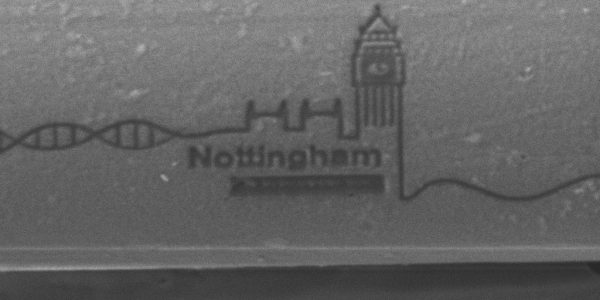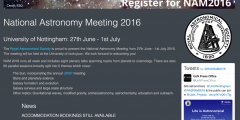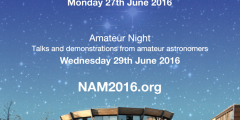Tiny logo celebrates big ambition
August 11, 2016
It might be invisible to the naked eye but a minuscule logo has been created to celebrate the great and the good of Nottingham. University of Nottingham scientists, based at The Nanoscale and Microscale Research Centre (NMRC) at University Park, have etched a Nottingham in Parliament Day logo onto a piece of Nottingham bridal lace. …
What has the comet Swift-Tuttle got to do with the Perseid meteor shower?
August 9, 2016
The Perseid meteor shower is one of the most stunning celestial events in the astronomical calendar and this year it will be better than usual. Perseids are so called because they appear to come from the constellation Perseus. But, as Christopher Conselice, Professor of Astrophysics explains – the Perseid cloud is actually debris in space which …
Is Pokemon Go just the beginning?
July 15, 2016
I’m both excited and intrigued by this week’s hullaballoo around Pokémon Go. These are the words of Steve Benford, Professor of Computer Science & EPSRC Dream Fellow and Professor of Collaborative Computing in the Mixed Reality Laboratory in the School of Computer Science at The University of Nottingham. So what’s his take on the latest Pokémon …
Master’s students brew and launch their own beer in the name of academic research
July 13, 2016
In February this year three students taking an MSc in Brewing Science and Practice at The University of Nottingham, got the opportunity to brew and market their own beer with Castle Rock brewery as part of their project dissertation. Last night saw the official launch of Alternate Universe – described by the team as a …
What happens when sports rules go awry?
July 5, 2016
As Wimbledon quarter finals beckon and the semi-finals of Euro 2016 are about to kick off, operational research scientists have been looking at what happens when the rules of sport are changed or when existing rules lead to unforeseen consequences. They’ve been assessing how administrators and supporters deal with these situations and if their decision …
Galaxy clusters – what are they?
June 24, 2016
Over 500 scientists are descending on the Jubilee Campus at The University of Nottingham next week to discuss the latest breakthroughs and discoveries in astronomy. Many of these astronomers will be discussing massive agglomerations of galaxies called clusters. Dr Elizabeth Cooke and Kshitija Kelkar who studying distant clusters of galaxies here at the The University of Nottingham. Here …
Sex, bugs and rock n’roll — University ecologist hits Glastonbury
June 23, 2016
There’s no shortage of mud at Glastonbury this week so The University of Nottingham’s Open Air Laboratories Community Scientist is in her element bringing soil science and other ecological messages to festival goers. Dr Sarah Pierce from the School of Life Sciences is part of a team of experts from the British Ecological Society taking their …
The importance and consequences of colliding galaxies
June 22, 2016
Five hundred astronomers will gather in Nottingham at the end of June for the Royal Astronomical Society’s annual National Astronomy Meeting – #NAM2016. The UK’s biggest astronomy meeting takes place this year at The University of Nottingham’s Jubilee Campus for one week from the 27 June to the 1 July. In the run up to this prestigious event …
Why is tonight’s full moon called a Strawberry Moon?
June 20, 2016
Want to know why tonight’s full moon is called a Strawberry Moon? Dr Julian Onions, who is studying galactic computer simulation in the School of Physics and Astronomy, has the answer. Tonight (well strictly noon 12:02 June 20th if we’re going to be pedantic) the moon is full again. This happens about 12 and a bit …
Reach for the stars – 500 astronomers meet in Nottingham and the public can join in
June 16, 2016
The Royal Astronomical annual National Astronomy Meeting – NAM – comes to Nottingham for one week at the end of June. Julian Onions, part time PhD student at The University of Nottingham, is studying galactic computer simulation and is one of the organisors of the event. In this blog he peers into future to tell us what’s …










